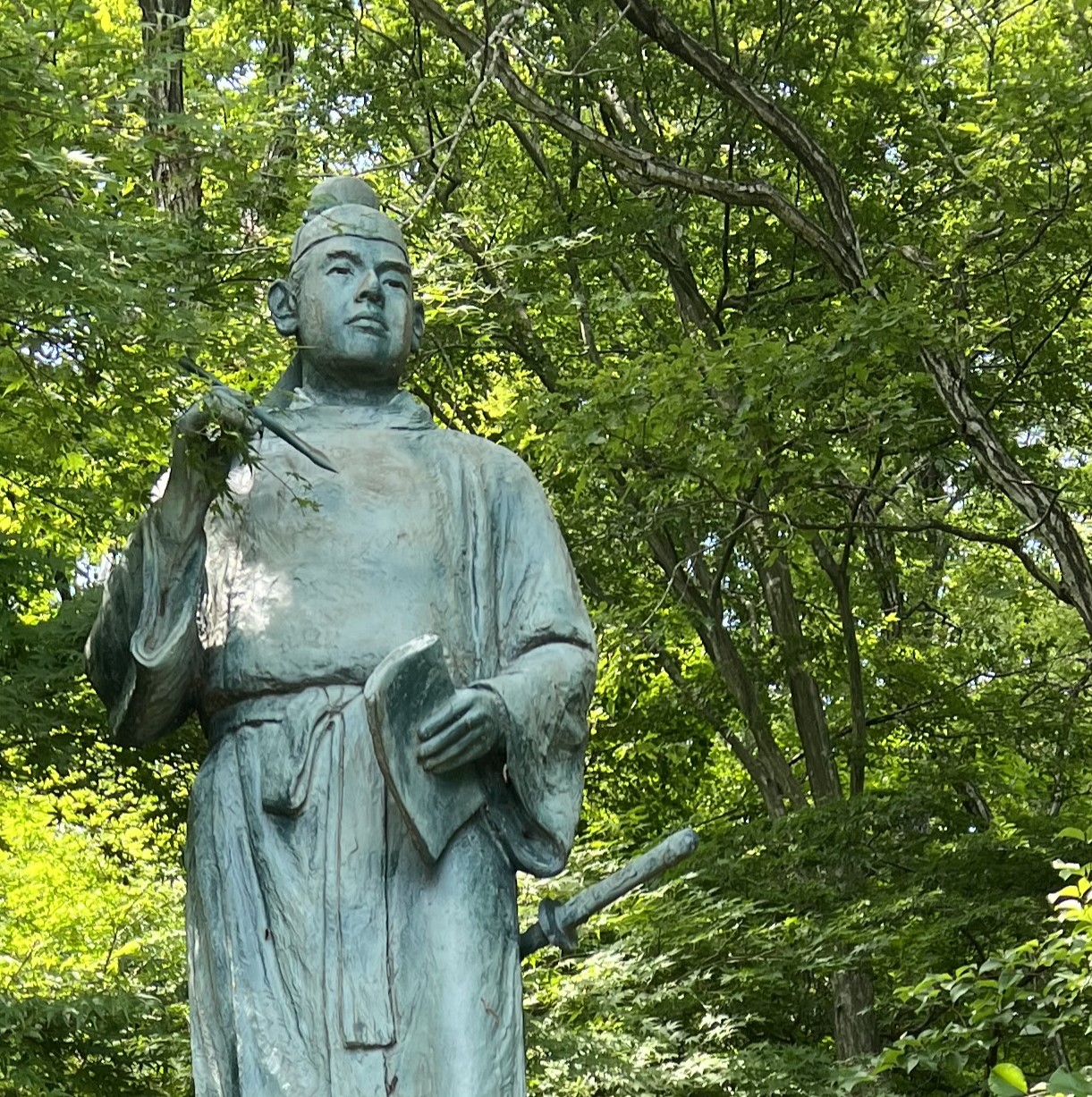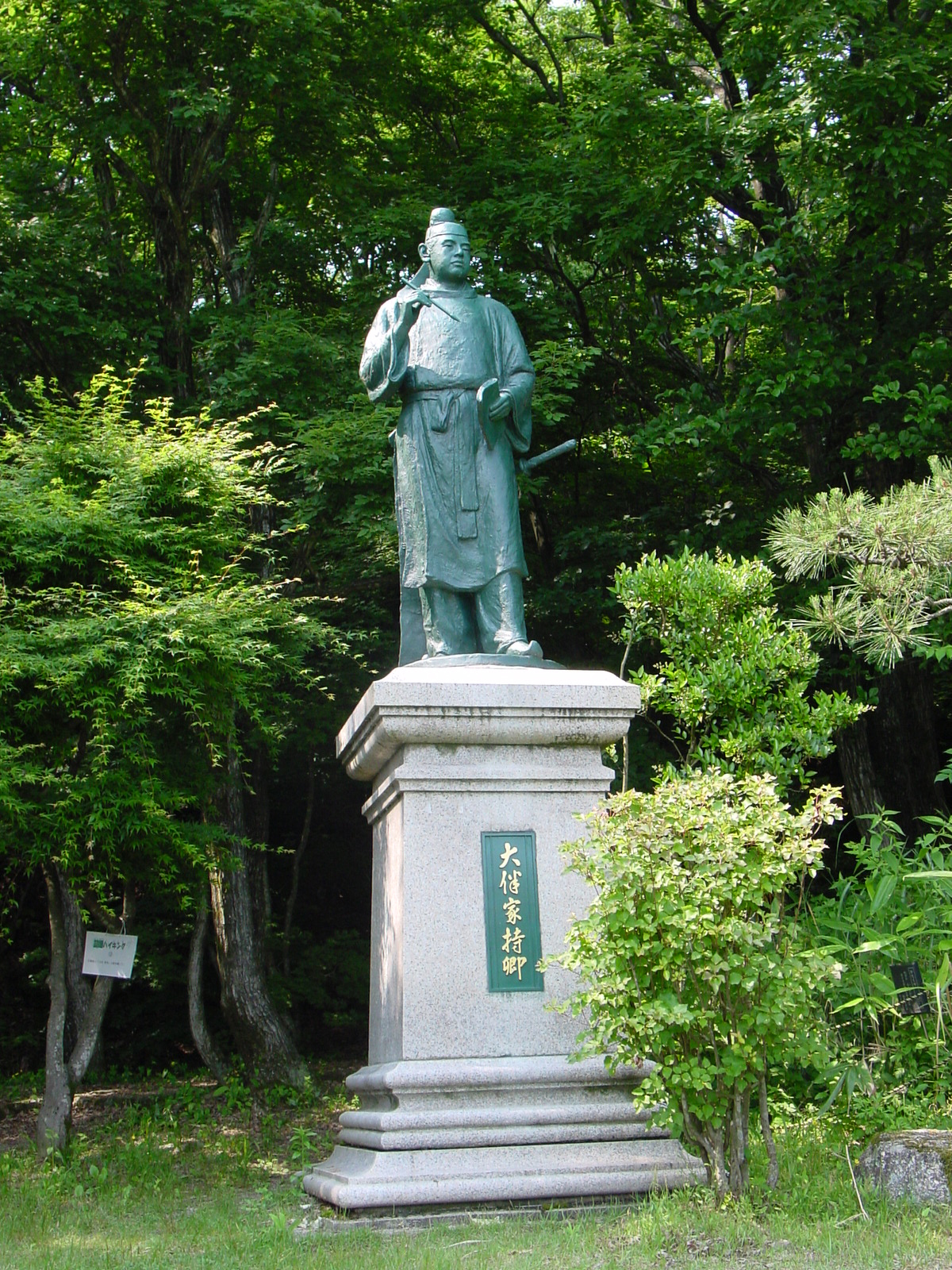歌碑8「二上山に鳴く鳥」-二上山 奥御前下 大伴家持像台座Monument No.8 “Birds singing on Mt. Futagami”-Ōtomo no Yakamochi Statue on Mt. Futagami
2022年07月21日

左注には「三月三十日に興に依りて作る」とあるが、大伴家持はこの前日にも、ほととぎすの声がまだ聞けていないことを恨めしく思う歌を作っている。ここでいう「三月三十日」は、現在の暦では五月中ごろにあたり、季節はちょうど春から夏へと変わる頃合い。それは、渡り鳥であるほととぎすが飛来する時期でもある。
In the note to the poem, it says that “Composed upon my interest being aroused on the 30th of the 3rd month.” Ōtomo no Yakamochi also wrote a poem the day before lamenting that he had not yet heard the song of the little cuckoo.The 30th day of the third month referred to here is the present -day mid-May, just when spring is becoming summer. This is also the time when the migrating little cuckoo arrives.
![万葉歌めぐりの旅[Man'yōshū Literary Pilgrimage]](https://www.manreki.com/manyo-songs/images/common/pic_logo.svg)











解説
Commentary
二上山に鳴く鳥
Bird singing on Mt. Futagami
『万葉集』の3987番の歌。『万葉集』は、7世紀前半から8世紀後半にかけての約130年間の歌を収めた現存日本最古の歌集で、4500首余りの歌が収められている。この歌の作者は大伴家持(718?~785)、『万葉集』でも最も多くの歌を残す歌人である。
長歌一首、反歌二首からなる「二上山の賦」の、第二反歌。「賦」は本来、中国詩文における韻文体の一つであるものの、ここでは長歌を指す語として用いられている。題の通り、二上山を讃美する歌である。二上山は、高岡市の北側にある山。伏木の越中国庁からは西に4kmほどの距離で、越中に赴任してからの家持は日々その双峰を眺めていたことだろう。
左注には「三月三十日に興に依りて作る」とあるが、家持はこの前日にも、ほととぎすの声がまだ聞けていないことを恨めしく思う歌を作っている。ここでいう「三月三十日」は、現在の暦では五月中ごろにあたり、季節はちょうど春から夏へと変わる頃合い。それは、渡り鳥であるほととぎすが飛来する時期でもある。こうした例の存在は、古来より現在までほととぎすが夏の訪れを知らせる鳥であったことを示している。
家持が越中守に任ぜられ、越中国に赴任したのは前年の七月頃であるため、今年(天平十九年)初めて越中でほととぎすの鳴き初めを聞くことになる。そうした期待感が背後にあったのかもしれない。
なお、「玉くしげ」は「二上山」にかかる枕詞だが、歌の文脈に直接かかわらず訳すのが困難なため、現代語訳と英訳では省略した。
高岡市の正法寺「越中万葉植物園」、旧二上山郷土資料館、古府小学校校門脇、万葉小学校校門脇、奥御前下(家持像台座)に歌碑が立つ。
(解説 ピーター・J・マクミラン)
This is poem number 3987 of the Man’yōshū. The Man’yōshū is the oldest existing collection of poetry in Japan, compiled over a period of around 130 years from the first part of the 7th Century to the latter part of the 8th century and consists of over 4,500 poems. The author of this poem is Ōtomo no Yakamochi.
This is the second appended poem (hanka) from a long poem called “A Tribute to Mount Futagami,” which consists of one long section (chōka) and two shorter poems that are appended to the longer section. The term “fu” was originally a rhymed prose style used in Chinese poetry, but here it refers to a long poem.
As the title suggests, this poem praises Mount Futagami, which is situated north of Takaoka City in Toyama Prefecture. The mountain sits four kilometers to the west of the Etchū Provincial Headquarters in Fushiki. Yakamochi would have had an excellent view of the twin mountain peaks during his days in Etchū.
The note to the poem says that it was “Composed upon my interest being aroused on the 30th of the third month.” Yakamochi also wrote a poem the day before lamenting that he had not yet heard the song of the little cuckoo.
The 30th day of the third month referred to here is in mid-May in the modern calendar, just when the weather turns from spring to summer. This is also the time when the migrating little cuckoo arrives. Yakamochi took up his post as regional governor in July of the previous year, so this would have been the first year (747) that he heard the little cuckoo sing in Etchū. This delightful poem shows that the little cuckoo has been celebrated in Japan as the harbinger of Summer since ancient times, just as it still is today.
There are multiple waka poem monuments around Takaoka City, including at the Shoboji Manyo Botanical Gardens.
(English Translation and Commentary by Peter Macmillan)